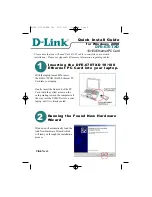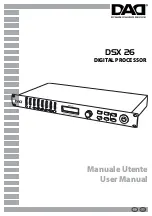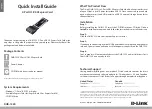
182
Macro Operations in the Flexi Pad
Chap
te
r 1
4
Ma
cr
os
Macro Execution
To execute a macro, recall the register in which the macro
is held. Simultaneous with the register recall, all events
stored in the macro are played back (executed) in sequence
without pause.
Pausing and restarting macro execution
It is also possible to execute a macro in the following ways.
Pause event
To adjust the execution timing of a particular event (to
delay the start of execution of the event by a particular time
interval), you can store a special event which pauses macro
execution. This event is called a “pause event.” When you
store a pause event, you can set the interval for which the
macro is paused (the pause length) to any value in the
range 1 to 999 frames. When the set time has elapsed, the
macro is automatically executed.
Pause zero event
By including a pause event with the time set to zero, you
can make macro execution pause at the pause event.
Step execution (requires a Setup menu setting)
By selecting step execution mode in the Setup menu, you
can make macro execution pause every time an event is
executed.
Take operation
When a paused macro is restarted, this is referred to as a
“Take” operation.
Macro take operation using a GPI input
You can carry out a macro take operation using a GPI input
on the control panel.
For details about GPI input settings,
Panel GPI Input Settings” (p. 230)
Macro Operations in the
Flexi Pad
Recalling a Macro Register and
Executing a Macro
A macro operation is performed by recalling a macro
register.
You can edit a macro by recalling an empty register.
Recalling a register holding a macro executes the macro
immediately.
To recall a macro register, use the following procedure.
Recalling by entering a register number
1
Press the [MCRO] button, turning it on.
This switches the memory recall section to macro
mode.
2
Enter the number of the register (1 to 250) to be
recalled with the numeric keypad buttons.
To search for an empty register, instead of entering a
number, press the [.] (period) button.
The entered register number or corresponding register
number appears in the alphanumeric display. If the
number is followed by a letter “E,” the register is
empty.
Macro being edited
(register 2)
Newly recalled macro
(register 1)
Recall macro register 2, and
move to another event.
Recall register 1.
Copy contents of register 1 and add after current event
(register 2).
Contents of register 1
remain unchanged.
m
m
MCRO button
Memory recall section
DRCT MODE button















































